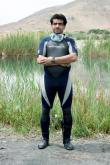Sea stars are spiny, hard-skinned animals that live on the rocky sea floor. Starfish puts enormous number of eggs. After fertilization, the tiny, transparent larvae( baby se star) travels many miles for about two months. Design To feed on hard-shelled prey like a clam, the sea star firmly grasps it with its arms until the clam slightly opens its shell. The sea star then pushes its stomach out of its mouth and into the clam and begins to digest its insides. When the clam is digested, the sea star pulls its stomach back inside its own body. The information for such a feeding habit was given to the sea star by its all-knowing Creator. CLASS: Asteroidea ORDER: Seven orders FAMILY: Varies depending on order GENUS/SPECIES: Over 1,800 different species Size: Varies greatly depending on species Diet: Barnacles, chitons, snails, urchins, limpets, sponges, and sea anemones Habitat: Worldwide in all of earth’s oceans SCUBA DIVING IN PALAVAN Palawan province, is the best-kept diving secret in Asia… a stunning collection of WWII shipwrecks, and despite coral reefs, wine blue seas, white sand beaches, and waving palm trees, the area remains almost unvisited. Busuanga Island, at the northern tip of Palawan province, is the best-kept diving secret in Asia. Despite a stunning collection of WWII shipwrecks, and despite coral reefs, wine blue seas, white sand beaches, and waving palm trees, the area remains almost unvisited. Toss in Busuanga’s other virtues — limestone islands and cliffs, three airlines with daily service to Manila, and a world-class resort on a private tropical island — and you get something approaching paradise. Most of the visitors to Busuanga are divers, and they come to explore the shipwrecks. These were thoughtfully supplied by U.S. Admiral William Halsey on September 24, 1944, at 9:00 am. Sensing that the area would one day be a mecca for scuba divers, Halsey and the American fleet sank 24 Japanese warships, 12 of them in conveniently shallow water, in a wide arc around the south side of Busuanga Island. In the intervening years, a wealth of sea life has grown on the sunken ships. Every inch of steel sprouts some bizarre sea creature. The wrecks are covered with corals and clams and sea fans, and swarming with lionfish and groupers and scorpion fish and squid and eels and sea squirts and a thousand other life forms both plain and fantastical. An hour’s boat ride from Club Paradise — the world-class resort on the private island — is the wreck of the Kyokuzan Maru, a 152-metre freighter that was bombed on that fateful September morning. It lies in a sheltered bay, in 43 metres of water. The Kyokuzan is a deep dive, but with little current. Visibility is excellent. We drift down the huge mast and into the silent graveyard, over the abandoned deck and under the giant rudder. Pycnodonte clams cover the wreck, grinning through their saw-toothed shells. Clams and other filter feeders predominate here, because they don’t need strong currents to bring them food. The Kyokuzan, with its empty portholes and silent staircases, has an eerie, human quality to it. In the cargo hold sits a Toyota, its white-walled tires intact and clearly visible. On the deck lies a broken rice bowl. We swim through a narrow opening and into a ghostly green room. A string of portholes stretches into the dim distance, and small black fish swim in the silent circles. The Japanese sailors are gone but not forgotten. Angel fish and remoras guard their final resting place. Emerging from the dark, silent water into the warm Philippine sunshine is like being born again. Everyone is happy; cold beers are handed around. Bob, an American diver, delivers the epitaph: “It was better than my first girl,” he says. The House Reef dive, on the wave-swept beach in front of Club Paradise, is a good beginner’s dive, easier than the Kyokuzan. Isabelle Meier, like all the dive instructors at Club Paradise and its sister resort El Rio Y Mar (Las Hamacas), is low key and helpful. Before we wade into the sea, she checks all the crucial details: hoses hooked up, weight belt fastened, tank on tight, air turned on. Isabelle finds life everywhere on the House Reef: a glass shrimp in an anemone, and a jaw fish peering from a hole in the sand. She causes a giant clam to close its shell — snap — and points out moray eels, blue sea slugs, green and orange parrot fish, and a multi-coloured cuttlefish. She points again, and a green turtle glides away. The next day, we rise at dawn for the three hour boat ride to Apo Reef. Because scuba divers often rise at dawn, Club Paradise is an early-to-bed kind of place. After dark, the roving eye finds nothing more tempting or troublesome than a cold beer and a game of pool. But scuba diving is not the exclusive domain of the super fit. Quite the opposite — the tank in back is often balanced by a fat belly in front, usually of German origin, and the bubbling respirator is always replaced by a glowing cigarette and the wet brown neck of a San Miguel. The banca plows through the morning waves toward Apo Reef, due north, past some perfect islands and a few scattered fishermen. Finally it stops, and we all peer overboard. The ocean bottom is clearly visible 12 metres below, green and aqua blue. Mindoro looms in the distance. Instructor Marvin Alvarez explains the dive: an easy swim along a vertical reef wall. Excellent. Then Marvin draws a scribble in the diagram. That, he says, is the washing machine — an angry whirlpool in the middle of the reef, a ticket to blue oblivion that sucks in and spits out careless divers. “Stay close to the wall,” he says. We plunge into the water and sink beneath the waves, floating like a dozen astronauts, and drink in the sights: barrel sponges, turtles, a galaxy of bright fish and corals, sea fans, feather stars, and more, in endless colourful variety. At the end of the dive we feel the soft but persistent tug of the washing machine, and scramble for the boat. Then comes lunch. Scuba diving is like a Hemingway novel: food is forever being prepared, discussed, consumed, or digested. There’s good reason for this — it takes time for accumulated nitrogen to bubble out of the bloodstream — but sheer hedonism also plays a role. Lunch, a sunlit sea, and another dive still to come, is the life of Riley if there ever was one. The second Apo Reef dive hugs a deep gorge that drops hundreds of metres into a lightless void. Snappers patrol at the edge of darkness. Below the snappers, out of sight in the dark water, are the resident hammerheads. A strong current can bring the sharks up in search of food, but today they remain invisible. Countless fish swim in the clear cool water of Apo Reef, and the sea bottom is an explosion of colour. This is the ‘coral triangle,’ an area between the Philippines, Indonesia and Vietnam that contains more biological diversity than any ocean in the world. Scientists believe all sea life originated here, which explains the astonishing variety. I get a little high, tripping on the sights and daydreaming away, and soon forget the names of even the most common fish. This pleasant but dangerous condition is called nitrogen narcosis, and it adds another dimension to what is already an intense and surreal experience. Another feature of Club Paradise is the night dive. Wading into crashing surf in tropical darkness, burdened by tank, weight belt, fins, spotlight, and all the rest, is a high-voltage adventure. The first big wave knocks me back up the beach in an ungainly heap of gear. Marvin drags me back into the water, and we quickly descend 15 metres under water, where the ocean is a whole lot calmer. At night the urchins and crabs are very active, and so are the soft corals. Plankton glows green and blue, a parrot fish sleeps in protective mucous, and an ungodly strange crab prowls the rocks. A crown of thorns starfish, scourge of the reef, leaves a trail of devastation as it sucks the life out of the corals. But the best is yet to come — the short walk from dark sea to Dugong Bar, straight from dripping wetsuit into dry martini. We leave a trail of tanks, vests, fins, hoses, weight belts and other gear, and the alert and helpful Club Paradise staff takes care of it all. The next day we transfer to Club Paradise’s sister resort, El Rio Y Mar (Las Hamacas), which is closer to Cayangan Lake and most of the WWII shipwrecks. Cayangan Lake is a unique dive. It requires a long swim to Coron Island, then a tough scramble over steep limestone, weight belt and tank and fins in hand, under the tropical sun. The lake, fed by a hot spring, is not refreshing. As it gets deeper, the water gets hotter, and at 30 metres the temperature reaches 40°C. Naturally, some divers like to see how deep they can go, before they cook in their wetsuits like steamed clams. “We call it the dive to hell,” says instructor Eric Laurel. We adjust our masks and sink below the surface. Balls of silt hang suspended in the water, and the lake bottom, composed of pliable plastic mud, sinks away. Cayangan Lake is a world of brown and gray, a sepia-tinted moonscape devoid of colour. The thermocline, where the water changes temperature, is clearly visible. Shrimp and snails and small fish live above the thermocline, but below is the death zone, where nothing survives, except the odd diver on his way to hell. Three hours from Cayangan Lake, again by banca, is the wreck of the Taiei Maru, a WWII Japanese oil tanker. The Taiei Maru sits in 26 metres of water, a silent monument to a distant war, and a dangerous playground for scuba divers. Unlike the Kyokuzan, the Taiei Maru lies in an open strait, battered by strong currents that bring a rich stream of nutrients to the shipwreck. Lettuce and whip corals and anemones cover the Taiei Maru, and clouds of fusiliers, snappers, and batfish swim nearby. A gaudy lionfish hangs motionless near the bow, waiting to suck in unwary passersby - an underwater version of the Nathan Road shopkeeper. A little squid hovers in the open ocean, and three clownfish keep vigil over a sea anemone. Instructor Eric Laurel points at something, but we see nothing. He points again, to the same spot, and the outline of a scorpion fish appears, then another, then a third. The bottom of the wreck is covered with the shy, poisonous fish. Eric swims to a machine gun mount and fires mock bullets into the murky sea. This gun may have shot down some American bombers on that fateful morning. Five U.S. planes are still missing, says Eric, and like every diver in Busuanga, he is keen to locate them. But the gunner’s efforts were in vain: a tangled mass of steel near the bow attests to a direct bomb hit. We edge into the current for a closer look. Next we follow Eric through a long, dark, narrow tunnel. Above is the rusty roof of the Taiei Maru, and below are the spiny scorpion fish. My fins, lighter than water, brush the jagged roof, and the divers in front kick up a cloud of murky silt. The experience is nerve-wracking and thrilling. The Taiei Maru is close to El Rio Y Mar, the smaller sister resort of Club Paradise. At El Rio Y Mar, all the guests sit down to dinner together, and inevitably, the conversation turns to diving. There’s always another place to see, especially in the Philippines. The spaghetti shoal in Bohol is a crazy dive, says Eric, full of sea snakes. February is the hammerhead season at Panglao Island, and April is when the whale sharks come to Domsol Island. Many divers return to Busuanga: 12 of the 24 Japanese wrecks are dive sites. Eric’s favourite is the Akitsushima, a 148-metre aircraft carrier teeming with life, like fish soup, he says. There’s also a fantastic underwater cathedral, and many more coral reefs. Everyone makes plans to come back someday. After all, it’s only 90 minutes from Manila, and we expect to have the place virtually to ourselves. Again. A special place for divers who like wreck diving is Coron Bay close to Sangat island in Busuanga. I have visited this dive area twice (2000 and 2003) and I was impressed by beautifully covered wrecks They are in excellent condition and lie at depths that can be reached by sport divers (you can take Nitrox courses at the dive resort) and the dive guides know a lot about where to find all kinds of rare animals. We stayed both times at Sangat island - it is like staying in a paradise - very quiet but a nice little beach, comfortable bungalows and good food. Please take note, that all dives on the wrecks have to be planned very carefully. I personally think a dive computer is a must, because it is very easy to get close to deco-time! There are buoys with lines on all wrecks and our dive guide always had a tank with a regulator hanging at 5m depth under the dive boat . Our deepest dive was 35m to 39m on Irako where we did a very difficult dive through the kitchen and workrooms and 36m on Akitsushima where we dived through the large rent of the ship and past wheels, pipes and electric wires. I recommend these dives only for experienced divers. Just stay on the deck of these wrecks and enjoy the abundant life there! Do you get a kick out of exploring the watery world? Do you realise that more than 70% of this planet is covered by ocean? Do you wish you could explore outta space but don’t have the budget? Then you seriously need to consider Adventure Diving. There is literally another world out there, right beneath your nose. This portal is about showing you how to access some the most AMAZING shipwrecks and adventure scuba dives available to man. We love exploring new frontiers! Whether you’re after wreck diving, shark diving or reef diving - we will show you the best corners of the planet where you can get your fix. We have expert divers and explorers contributing to our content, so you can leverage off years of exploration and expertise. DIVE SHARK Aloha, Hawaii. Shark diving in Hawaii ranks among the best in the world. The Hawaiian island chain is made up of 132 islands, with the two islands Maui and Oahu having the best places for shark scuba dives. Hawaii is located 2400 miles from the nearest continent, which creates a unique underwater environment. You can see a lot of different shark species on shark dives in Hawaii. Actually there are about 40 species of sharks in Hawaiian water. The most frequently encountered are the Sandbar Sharks, Reef Whitetip Sharks, Scalloped Hammerhead Shark and occasionally Tiger Sharks. But even Whale Sharks can be seen near Hawaii. An always popular adrenalin-pumping activity is shark cage diving. Hawaii is a great place for this kind of diving (or swimming is probably a better word for this non-scuba diver activity). Typically you will encounter Gray Reef Sharks, Galapagos Sharks and Sandbar Sharks. And if you are lucky, you can even see Tiger Sharks or Hammerhead Sharks on a dive trip from Hawaii. Shark dive here is really diversified. So if you are on holiday and you have never tried a shark dive, Hawaii is a great location for this thrilling experience If you are on holiday and always have wanted to do a shark dive, Oahu is a great place to try it. The water is cobalt blue and visibility is approximately 200 feet – better than most other places. The sharks commonly sighted include Gray Reef Sharks, Galapagos Sharks, Sandbar Sharks and Hammerhead Sharks. On the way to the dive sites you may also encounter dolphins, green sea turtles or majestic humpback whales on the way to the dive site. If you want to try shark cage diving in Oahu, North Shore Shark Adventure Cruise is highly recommended. The company is not just the oldest shark diving company in Hawaii. It is also the one with the best recommendations (read some of the customer comments below). The company has even been featured on ESPN Outdoors and BBC Outdoors in England. Once the boat arrives in the area, the shark cage is placed in the water. The cage floats on the surface of the water and you have the option to get in the cage for an underwater encounter with the ocean"s apex predator. The cage itself holds two people very comfortably, however can hold up to four people at a time, depending on the weather conditions. And the sharks will swim only inches away from you. If you do not wish to enter the shark cage, there will still be ample surface viewing opportunities as the sharks circle the boat. The price is $120 for shark cage diving and $60 for surface viewing. The prices for children are $60 and $45 respectively. If you do not see any sharks you will get your money back. The duration of the trip is about two hours, with half an hour of transport and the rest of the time at the dive site. You will spend approx. 20 - 30 minutes in the water viewing the sharks up close. More than enough time to get your blood pumping! Comments from the satisfied customers: “This was a great trip and exceeded our expectations. Seeing sharks circling up from the deep to come and feed in close attendance with Trumpet fish and a random Tuna was a sight I will never forget.” (Malcolm Fawcett) “A really professional activity, the staffs were friendly and attentive, funny and informative. We started the day being scared of sharks and ended up wanting to pat them.” (Louise & Melanie) “This was by far the best adventure I"ve ever been on and I"d do it again in a heartbeat, which is very different from most touristy things I"ve done in Hawaii where once is enough.” (Len Langevin) “This was by far and away the most amazing experience of my life. Anyone that is coming to hawaii should go out and get in the water with these beautiful creatures. It is an experience unlike any other.” (Amber) So if you are going to Oahu, shark diving should certainly be on your “to do”-list. .Sea Star


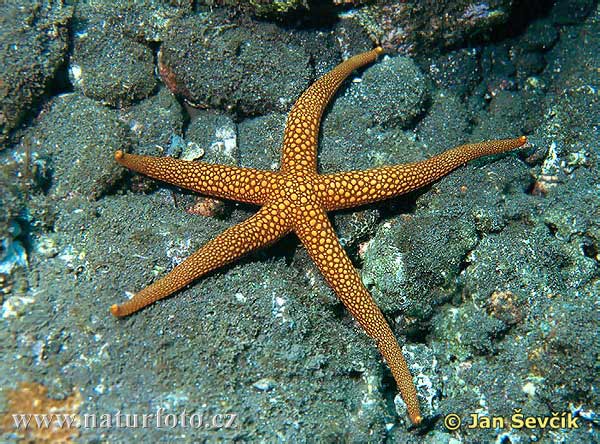
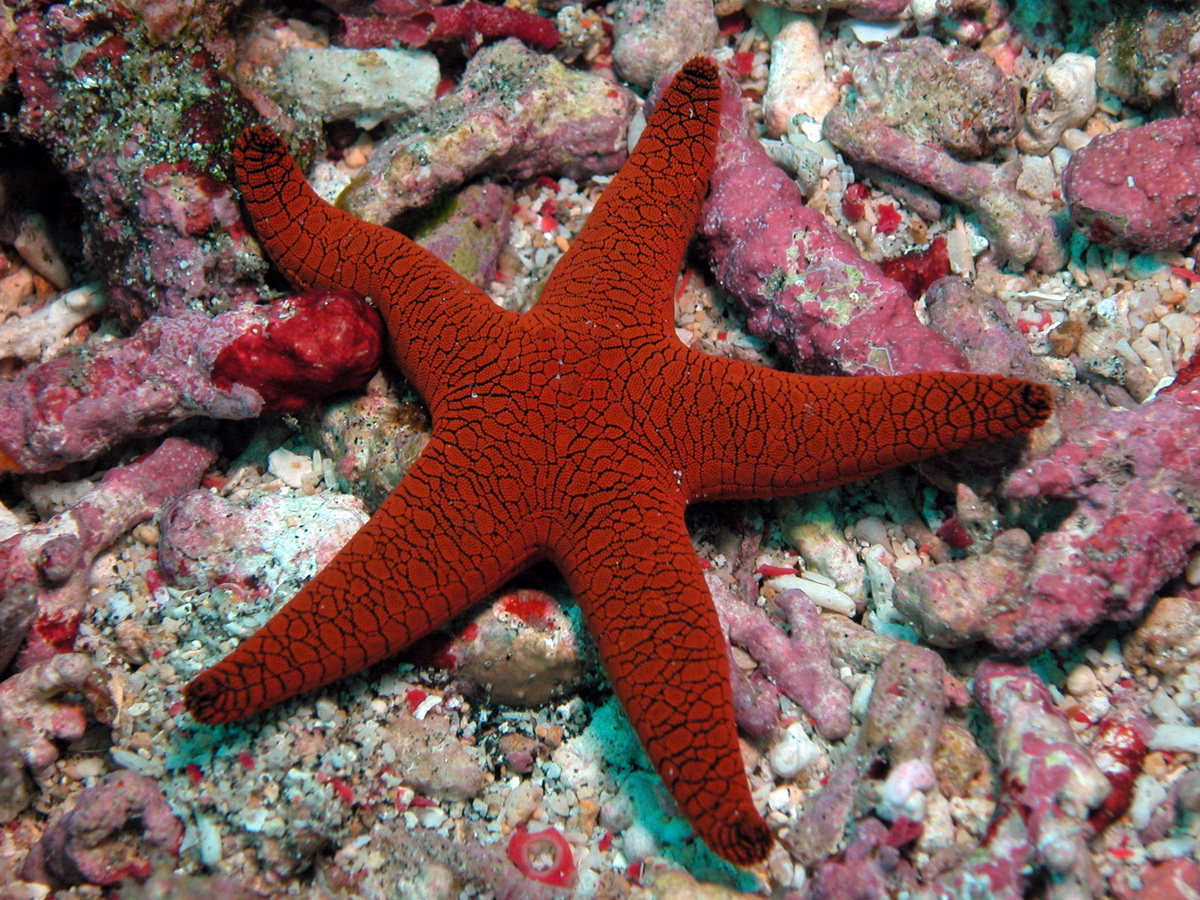

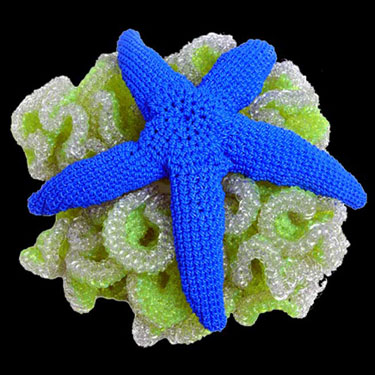
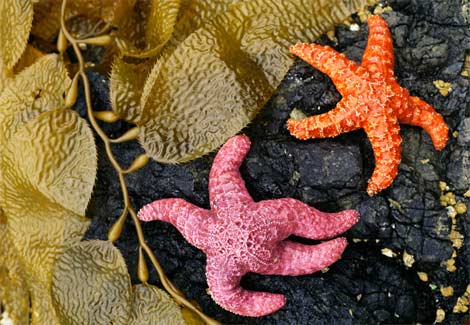
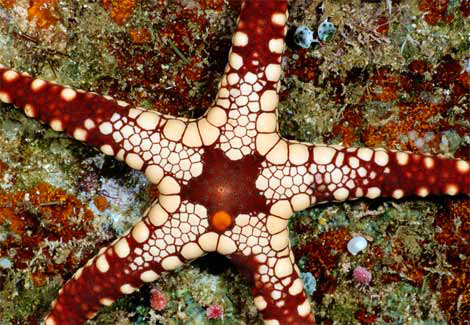
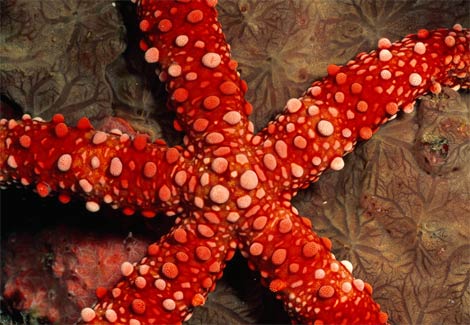
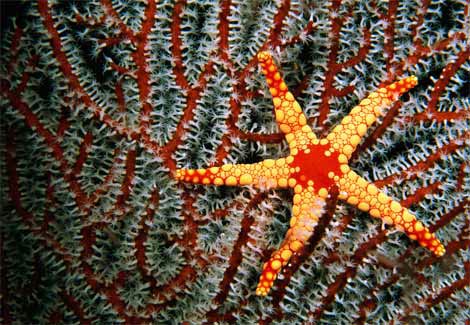
Features
Fun Facts




![]()

Shark cage diving in Hawaii

Shark diving in Hawaii

Shark diving in Oahu
North Shore Shark Adventure Cruise

Shark cage diving, Oahu with North Shore Shark Adventure Cruise

An Oahu shark dive is a thrilling experience
Sea stars are also known as starfish, but they are not fish at all.
A sea star can regrow arms that are lost, and if cut in half, some sea stars can grow into two separate creatures.
The fastest sea star moves at 360 ft per hour (110 m/h)—that’s only slightly faster than a snail.
نوشته شده در جمعه 89/3/21ساعت
9:9 عصر توسط عباس حق نگهدار نظرات ( ) |
Filed Under (Adventure Travel, Philippines) by admin on 02-03-2008
Filed Under (Adventure Travel) by admin on 02-03-2008
نوشته شده در جمعه 89/3/21ساعت
7:33 عصر توسط عباس حق نگهدار نظرات ( ) |
نوشته شده در جمعه 89/3/21ساعت
7:22 عصر توسط عباس حق نگهدار نظرات ( ) |


